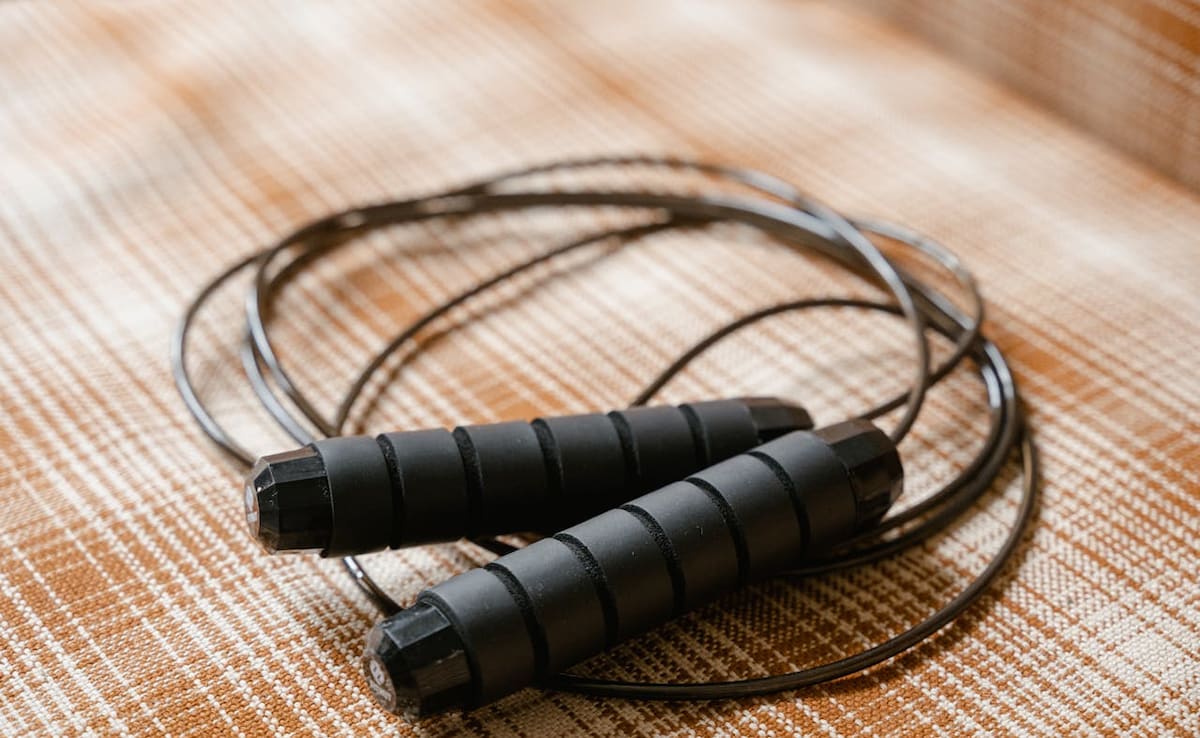
Remember those carefree days when skipping rope was all about who could go the longest without tripping? Well, that same playground activity has earned its spot as one of the most effective fitness routines. Jump rope exercises, or skipping, as most of us called it growing up, are no longer just for kids. Athletes, boxers, and fitness enthusiasts swear by it for building endurance, burning fat, and even improving mental focus. The best part? You don't need expensive gym memberships, fancy equipment, or even a big space. A sturdy rope, a pair of comfortable shoes, and just 10-15 minutes a day are enough to give you a high-intensity workout. In fact, studies show that skipping rope for 10 minutes can provide similar cardiovascular benefits as jogging for 30 minutes.
But here's the catch: it's not about mindlessly hopping until you're breathless. Done right, jump rope exercises can boost heart health, support weight management, and improve agility. Done wrong, they can put strain on your knees and joints. So, let's dive into the benefits and then explore 5 safe, effective jump rope moves for your daily routine.
Why Jump Rope Is A Great Fitness Tool
There are many benefits of jump rope exercises that experts from around the world highlight, so knowing about them can help you figure out if these exercises can be a part of your workout regimen too.
1. Burns Calories Fast
Skipping is a high-intensity cardiovascular workout. According to the American Council on Exercise (ACE), you can burn around 200-300 calories in just 15 minutes of jump rope, making it more efficient than many gym machines.
2. Boosts Heart and Lung Health
Jumping rope strengthens your cardiovascular system by improving circulation and oxygen use. A study in the Frontiers in Public Health found that rope skipping significantly improved cardiovascular fitness in adolescents, with similar benefits expected in adults.

Photo Credit: Pexels
3. Improves Coordination and Balance
Each jump requires timing, rhythm, and body awareness. Athletes, especially boxers, often include skipping in their training to improve footwork, balance, and reaction time.
4. Strengthens Muscles and Bones
Jump rope activates calves, thighs, glutes, shoulders, and core, all in one go. It also improves bone mineral density, which is crucial for preventing osteoporosis.
5. Portable and Affordable
Unlike treadmills or weight machines, a skipping rope costs less than a coffee outing and can fit in your bag. Perfect for home workouts, travel, or even office breaks.
5 Jump Rope Exercises You Can Try
Here are 5 simple yet effective jump rope exercises to add variety to your routine. Start slow, build rhythm, and remember-consistency matters more than speed.
1. Basic Jump (Beginner-friendly)
Why: Great for beginners; builds endurance and rhythm.
- Hold the rope handles at hip height.
- Keep elbows close to your body.
- Jump with both feet just high enough for the rope to pass.
- Land softly on the balls of your feet.
- Start with 1 minute, rest, then repeat 3-5 times.
2. Alternate Foot Step Jump (Intermediate)
Why: Burns more calories than the basic jump and is easier on the joints.
- Jump over the rope while shifting weight from one foot to the other (like jogging in place).
- Keep knees soft, core engaged.
- Imagine running with tiny skips.
3. High Knees Jump (Advanced)
Why: Engages core muscles and boosts cardiovascular intensity.
- While jumping, lift one knee up to hip height, alternating legs.
- Maintain a brisk pace and steady breathing.
- Do 20-30 seconds, rest, and repeat.

Photo Credit: Pexels
4. Side-to-Side Jump (For agility)
Why: Improves lateral movement and agility, great for sports performance.
- Jump slightly side to side as the rope swings.
- Land softly to avoid strain on ankles.
- Focus on rhythm instead of height.
5. Double Unders (For pros)
Why: Advanced move for calorie burn, coordination, and strength.
- Swing the rope faster so it passes under your feet twice before you land.
- Requires explosive jumps and wrist speed.
- Start with 3-5 reps and gradually increase.
Who Should Avoid Jump Rope Exercises?
While skipping is safe for most people, certain groups should exercise caution or avoid it altogether:
- People with severe arthritis, knee or hip injuries
- Those with osteoporosis or fragile bones unless cleared by a doctor
- Individuals with heart conditions should consult their cardiologist before starting
- Pregnant women (due to high-impact nature)
Note: If you're a beginner, always start with short sessions (2-3 minutes) and gradually increase intensity. Use cushioned shoes and avoid hard concrete surfaces to reduce impact on joints.
Jump rope exercises aren't just nostalgic fun. They're a powerhouse fitness tool that fits into even the busiest schedule. Whether your goal is weight loss, better stamina, or simply adding variety to your workouts, skipping is worth a shot. With the right moves and precautions, this humble rope can help you build a fitter, healthier body.
So next time you're scrolling for expensive gym gear, maybe just grab a rope instead. Your heart, lungs, and metabolism will thank you.
Disclaimer: This content including advice provides generic information only. It is in no way a substitute for a qualified medical opinion. Always consult a specialist or your own doctor for more information. NDTV does not claim responsibility for this information.
References
1. Baker, J. A. (2013). Comparison of Rope Jumping and Jogging. Research Quarterly for Exercise and Sport.
2. American Council on Exercise (ACE). Calorie Burn and Jump Rope Workouts.
3. European Journal of Applied Physiology. Effects of Rope Skipping Training on Adolescent Cardiovascular Fitness.
4. National Institutes of Health (NIH). Bone Health and Osteoporosis.
Track Latest News Live on NDTV.com and get news updates from India and around the world

